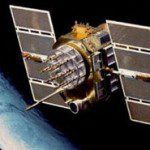Thursday, April 14th, 2011
Septentrio’s AsteRx3 receivers are successfully tracking the GLONASS CDMA L3 signal transmitted by the first GLONASS-K1 satellite. This satellite was launched on February 26. It carries a payload capable of transmitting a CDMA signal in the L3 band,...
Tuesday, March 29th, 2011
Beidou, the China's second generation of satellite system features services of locating, navigation, timing and even text message communication covering the Asia Pacific region by 2012, said the system chief designer Sun Jiadong. Such upgrades are perceived by...
Monday, March 7th, 2011
In the near future Russia and Australia will sign an agreement on the establishment of monitoring stations for the Russian GLONASS navigation system around the Australian city of Brisbane, an official with the Russian space agency said. The...
Thursday, February 24th, 2011
Russia will launch two extra navigation satellites, after three crashed, to provide extra insurance for the success of its bid to create a rival to the U.S. system, a news agency reported on Wednesday. The GLONASS satellites that...
Sunday, January 30th, 2011
The 22nd satellite of Russia’s GLONASS global navigation satellite system has resumed functioning after routine maintenance. The Glonass-M satellite No. 714 was put back into operation at 8:30 a.m. on January 27, nine days later than planned, the...
Tuesday, January 25th, 2011
TMicroelectronics today introduced Teseo II, a new generation of single-chip stand-alone positioning receivers for Portable Navigation Devices, in-car navigation and telematics applications. These Systems-on-Chips are the industry's first monolithic devices capable of receiving signals from multiple satellite...
Wednesday, December 22nd, 2010
The launch of Russia's new-generation Glonass-K satellite has been postponed until 2011, the Defense Ministry said on Tuesday. The satellite atop a Soyuz-2.1.b carrier rocket was to blast off from the Plesetsk Space Center on December 28. "Preparations have...

Friday, December 10th, 2010
Coming satellite launches among the Global Navigation Satellite Systems (GNSS) promise new and stronger signals, with the greater number of satellites resulting in better accuracy, faster position acquisition, and more ubiquitous use in such problematic areas as...
